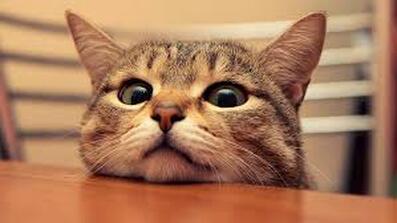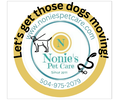 1. Why Does My Cat Knead Me With Its Paws? Kneading, often referred to as "making biscuits," is when your cat rhythmically pushes in and out with their front paws. This behavior stems from their kittenhood when they would knead their mother's belly to stimulate milk flow. Adult cats continue this comforting behavior when they're content, signaling that they consider you a safe space. 2. The Mysterious Cat Chatter Have you ever noticed your cat staring out the window at birds or squirrels and making peculiar chattering or chittering noises? While the scientific community doesn't fully agree on why cats do this, a popular theory suggests it's a result of their predatory instincts. The chatter may be a frustrated response to seeing potential prey but being unable to catch it. 3. The Infamous Belly Trap It's a trap that many cat owners have fallen for: your cat rolls over, exposing its belly, and the moment you reach out to pet it, you are rewarded with a swift swat or bite. While dogs may show their belly as a sign of submission and a request for belly rubs, for cats, it's often a sign of trust and contentment. They're showing you their most vulnerable side, but it doesn't necessarily mean they want it touched. 4. Nighttime Zoomies Many cat owners are familiar with the burst of energy cats display, often during the wee hours of the night. This "midnight madness" or "zoomies" is a result of their natural hunting instinct. In the wild, cats are crepuscular, which means they're most active during dawn and dusk. This is the time when their prey is most likely to be active, so they have evolved to match this schedule. Providing plenty of play and enrichment activities during the day can help lessen these nighttime antics. 5. The Tail Tells a Tale A cat’s tail is like a mood barometer. A high, quivering tail indicates excitement and happiness, usually seen when your cat greets you after you've been away. A puffed-up tail indicates fear or aggression, a response to a perceived threat. A low or tucked tail suggests submission or defeat. Observing these tail signals can provide valuable clues about your cat's emotional state. Deciphering cat behavior can be a fascinating journey. While they are renowned for their mysterious demeanor, with some understanding of their instinctual behaviors, you'll find that your feline companion is also capable of a vast range of emotional expression. Remember that every cat is unique, so what holds true for one might not for another. Paying close attention to your cat's specific behaviors and responses will foster a stronger bond and a harmonious co-existence.
0 Comments
Nonie’s Pet Care, LLC
Our Biggest Milestone Yet July 20, 2023 On July 20, 2023, we broke a record, we reached an impressive milestone of 1,002 visits for the month of July, and there are still days to go. Words cannot express the overwhelming sense of pride I feel in this moment. I am immensely grateful for my incredible team made up of degreed Vet techs and experienced pet handlers of all kinds. As the owner, there is no greater satisfaction than reaping the rewards of our hard work, meticulousness, and dedication to providing the best possible care for our clients and their beloved pets. The countless photos we provide, showcasing the happiness and playfulness of our furry clients, fill our hearts with joy. It's hard to believe that I started as a sole proprietor in Old Metairie back in 2011, and now we have grown to a team of 14, serving not only Metairie but also New Orleans, Kenner, Elmwood, Jefferson, Harahan, and River Ridge. The journey hasn't been without its challenges. Dealing with computer glitches, staff shortages, adverse weather conditions, personnel issues, and ensuring the well-being of everyone during impending hurricanes has tested our resilience. I have personally sacrificed vacations and even a haircut for two years (yes, a haircut!). I've had to replace the engine in my vehicle after reaching a dog in the midst of a flood. Many sleepless nights have been spent caring for sick or post-surgical pets in need of our assistance. I have provided support and guidance to clients faced with difficult decisions and have even taken on the responsibility of managing the end-of-life process for them when they felt overwhelmed. I can honestly say that I have the best team one could ask for. Together, we have worked through low grade hurricanes, worked tirelessly in the aftermath of disastrous weather events, and stood by our incredible first responders and medical professionals who stayed behind, caring for their pets without electricity or water. We have endured injuries, always putting the needs of the pets first. We have proudly nurtured fearful dogs and cats, shown love to aggressive dogs, and rescued and treated sick feral cats. The variety of species we care for, now, has expanded immensely. Proudly, I have established a Special Needs Unit, with a small team providing round-the-clock care for pets recovering from surgery or illness, offering wound care and assisting with complicated medication administration for clients who may be anxious about handling it themselves. Our Special Needs Unit collaborates closely with local veterinarians, ensuring seamless home care for their patients. Our Mission is to provide every Nonie’s Family with every possible service to help their lives become a little easier and happier. My team and I share in both the hard work and the immense joy that comes from making a pet healthier, happier, and less fearful. We pour our hearts into everything we do, whether it's cleaning up after them in their yards, changing wound dressings, or bringing them home from the groomer. When we step through their front doors and are greeted with excitement, love, and the knowledge that we are there solely for them, we can rest easy knowing we have fulfilled our purpose. Our hearts continue to grow with each passing day, fueled by the unwavering dedication to our work and the boundless love we receive from our furry companions. Although we are exhausted, at the end of the day our lives have been blessed by the work that we do. We may smile as we lay our heads on our pillows at night and sometimes, sometimes, a happy tear finds its way onto our pillowcases as we reflect on the pets that we loved that day. If your dog swallowed something toxic or potentially toxic, such as antifreeze, chocolate, medications, supplements, rat poisons, or drugs in any form, contact your veterinarian or ASPCA Animal Poison Control (888-426-4435) immediately. If your dog is having trouble breathing or has any other serious symptoms, contact your veterinarian right away. Dogs frequently swallow things they shouldn’t, especially inquisitive pups, but also dogs whose chewing drive is high (such as Labrador Retrievers, Pit Bulls, etc.). Although some objects may be small enough to swallow and pass through the digestive tract with minor consequences, others may be toxic, get stuck, or do damage at some point—in the mouth, throat, esophagus, stomach, or intestines. If you’re unsure whether your dog could have ingested something, it’s best to be cautious and visit your veterinarian. Left untreated, swallowed objects can be fatal. Any sudden onset of choking that affects respiration must be dealt with immediately. Immediate Care for Swallowed ObjectsThe specific steps to take will depend on what your dog ingested, how long ago it happened, and your dog’s symptoms. Here is a general guide for dealing with swallowed objects: 1. If you know your dog swallowed an object, call your veterinarian immediately and take your dog to the vet’s office as soon as possible. The doctor may be able to induce vomiting or retrieve the object from the stomach before serious problems set in.
4. Even with one hand on the upper jaw and the other on the lower, any dog can bite, so use every precaution. If you are working by yourself, keep an index finger on your lower hand free to perform step 5. 5. Look inside the mouth and sweep your finger from the back of the mouth forward to try to remove the obstruction. 6. Talk to your veterinarian or an after-hours veterinarian regarding follow-up care, even if you were able to remove the object. Heimlich Maneuver for Dogs Here are the steps for performing the Heimlich maneuver for dogs: Small Dogs Hold your dog vertically so their back is pressed against your abdomen. Place your closed fist just under their ribcage with your other hand on top. Pull up and in several times. Large Dogs Do not try to pick up a large dog; you may do further damage due to the animal's size. Instead, follow these steps:
For dogs who have swallowed a ball or similar object and are unconscious, the eXternal eXtraction Technique (XXT) can be performed. With the dog on their back, extend the neck forward so the top of the head is on the ground. Straddle the dog, identify the trachea (windpipe), the stuck ball, and the "V"-shaped jaw. Grasp the jaw with both hands and use your thumbs in a swooping J-like motion to get under the ball and push it forward for removal. Once retrieved, give two rescue breaths and seek veterinary care immediately. Commonly Swallowed Objects Here are some objects that dogs commonly swallow and the damage they could cause Choking, Poisonous/Toxic, Puncture injury, Intestinal injury, Blockage to name a few. Some items are Ballons, Batteries, Bones, Chapstick/Lipstick, Cigarettes, Cough Drop, Food Wrappers (aluminum, plastic), Fruit Seeds/Pits, Gum, Pencils/Pens, Plastic, Rocks, Rubber Bands/Hair Ties, Silica Gel Packet, Socks, String, Tampons, Toys and/or squeakers (especially tennis balls and rope toys that dogs enjoy chewing) What Will Happen at the Veterinarian’s Office? Treating a dog that has accidentally swallowed an object can vary from simply sedating the dog so the object can be safely removed from the mouth or throat to performing gastrointestinal surgery that may require the removal of large portions of bowel. The potential severity of a swallowed corn cob or sock cannot be underestimated. A veterinarian will be able to perform a physical examination and use X-rays, an ultrasound, or an endoscope to determine if your dog swallowed something and what it might be. Based on what it is and where it is in your pet’s body, your veterinarian may recommend surgery, endoscopic removal, or other forms of treatment. Tips for Preventing Your Dog From Eating Dangerous Household Objects If you’re worried about your dog swallowing something dangerous, here are some preventive measures you can take:
|
Archives
July 2024
Categories |

 RSS Feed
RSS Feed